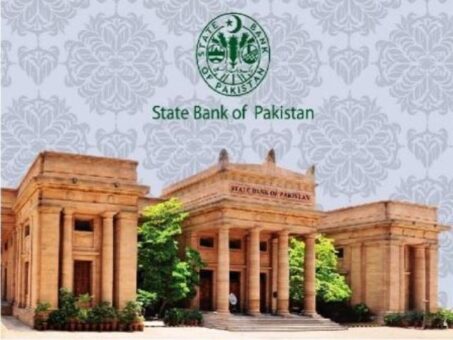The State Bank of Pakistan (SBP) has issued its Half Year Report for FY23, providing an analysis of the country’s economic performance during the July-December period. The report reveals a deterioration in Pakistan’s macroeconomic conditions, despite some policy-induced improvements in the external current account and primary fiscal balance.
Adverse global economic conditions, uncertainty surrounding the completion of the IMF program’s 9th review, insufficient external financing, low foreign exchange reserves, and the repercussions of flash floods and political instability have been identified as major concerns during this period.
The report highlights significant contractions in agriculture production and large-scale manufacturing (LSM), accompanied by a rise in headline inflation to a multi-decade high level. To address these challenges, the SBP implemented a further 225 basis points increase in the policy rate during H1-FY23, building upon the 675 basis points increase in FY22. The government also curtailed federal expenditures on grants, subsidies, and development while introducing regulatory measures to restrict imports, aiming to alleviate pressures on the external account.
READ MORE: SBP issues procedure for payment of mark-up subsidy under youth program
Despite a visible contraction in domestic demand, inflation remained stubbornly persistent since H2-FY22. High global commodity prices, elevated inflation expectations, flood-induced supply shortages leading to higher food prices, PKR depreciation, and increases in power tariffs and energy prices were identified as key drivers of inflationary pressures. These factors, along with rising inflation expectations, contributed to an uptick in core inflation.
Regarding the fiscal sector, the report notes a contraction in major non-interest current expenditure, particularly subsidies, grants, and development spending, resulting in an improvement in the primary surplus. However, the fiscal deficit remained at last year’s level in terms of GDP, primarily due to a significant expansion in interest payments. Efforts in tax administration, inflation, and higher returns on deposits contributed to an expansion in FBR taxes, but a contraction in imports and a dip in economic activity limited tax collection below the target for the first half of FY23.
READ MORE: State Bank of Pakistan sets stringent guidelines to combat digital fraud
The external sector, including external financing, faced significant pressure during H1-FY23 due to uncertainty regarding the resumption of the IMF program and tight global financial conditions. Supply chain disruptions stemming from the Russia-Ukraine conflict and China’s zero-Covid policy hampered global demand, impacting Pakistan’s export performance. Additionally, flood-related disruptions and increased usage of informal channels affected both food exports and workers’ remittances. However, the decline in exports and remittances was offset by a larger fall in imports, leading to a notable decline in the current account deficit (CAD). Despite this improvement, the report highlights a decline in foreign exchange reserves during H1-FY23 due to delays in IMF disbursements, political uncertainty, scheduled debt repayments, and net outflows.
The report concludes with a Special Section focusing on the opportunities and challenges in Pakistan’s software-led IT exports and technology start-ups. It emphasizes the country’s small share in global IT exports and negligible domestic software usage, while also shedding light on enabling policies that have fostered growth in this sector. Critical gaps that need to be addressed for sustaining recent growth in the IT sector are also highlighted.
READ MORE: SBP revokes authorization of Nobel Exchange International
